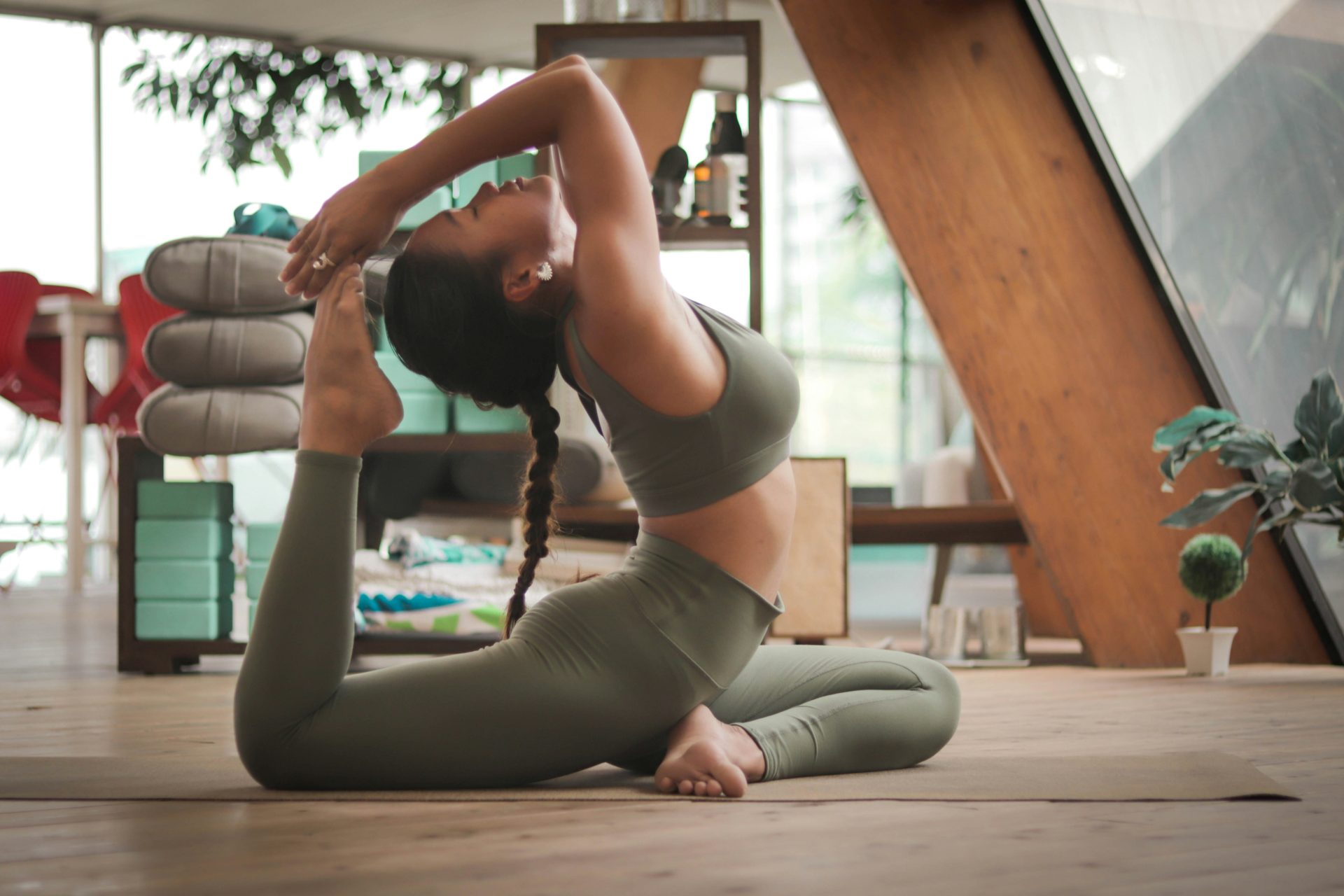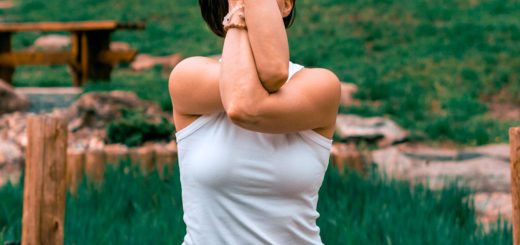Yin Yoga: The Practice of Stillness and Reflection

Before diving in, please note: This post is for informational purposes only. If you’d like to know more about how we approach topics, feel free to check out our friendly Disclaimer Page.
Hey there, amazing readers! 🖐️ Just a quick note: yes, we know there are a lot of ads here. Trust us, we get it—it’s not the prettiest look, but they help us keep this blog alive and kicking. Those pesky little ads cover the costs of all the behind-the-scenes magic, from hosting and tech stuff to creating content we hope you’ll love.
We’re committed to delivering quality posts, and your support (even just sticking around despite the ads) means everything to us. So, bear with us, and thanks for helping us keep the good vibes rolling. Now, on to the fun stuff! 😉
TRANSLATE BUTTON AT THE END OF THE ARTICLE
Understanding Yin Yoga
Yin yoga is a gentle yet profound practice that focuses on holding poses for an extended period, typically three to five minutes or even longer.
Unlike more dynamic styles of yoga, Yin yoga targets the deep connective tissues in the body, such as ligaments, tendons, and fascia, rather than the muscles.
This allows for a deep stretch that can help increase flexibility, improve joint mobility, and release tension.
The practice is rooted in traditional Chinese medicine and the concept of yin and yang, where yin represents stillness, darkness, and passivity, while yang symbolizes movement, light, and activity.
Benefits of Yin Yoga
The benefits of Yin yoga are numerous and far-reaching.
By holding poses for an extended period, practitioners can improve flexibility and joint mobility, reduce stress and anxiety, increase circulation, and enhance overall well-being.
Additionally, Yin yoga can help release tension and tightness in the body, improve posture, and promote relaxation.
The practice is also known for its ability to cultivate mindfulness, patience, and self-awareness, making it a powerful tool for personal growth and introspection.
Difference from other forms
Yin yoga differs from other forms of yoga, such as Vinyasa or Hatha, in its focus on passive stretching and stillness.
While more dynamic styles of yoga emphasize movement and muscle engagement, Yin yoga encourages practitioners to relax into poses and surrender to gravity.
This slow-paced practice allows for a deeper release in the connective tissues and helps stimulate the flow of energy, or qi, throughout the body.
Additionally, Yin yoga complements other forms of yoga by providing a balance to the more active practices, creating a holistic approach to physical and mental well-being.
Principles of Yin Yoga
The principles of Yin yoga are rooted in the concept of yin and yang, where stillness and reflection are valued as much as movement and action.
This practice emphasizes the importance of patience, surrender, and acceptance, encouraging practitioners to let go of the need for perfection or accomplishment.
The key principles of Yin yoga include finding comfort in discomfort, holding poses for an extended period, maintaining a relaxed breath, and cultivating a sense of mindfulness and awareness.
By embodying these principles, practitioners can tap into the deeper layers of the body and mind, fostering a sense of inner peace and balance.
How to practice Yin Yoga
To practice Yin yoga, find a quiet and comfortable space where you can lay out a yoga mat or cushion.
Begin by selecting a few poses that target different areas of the body, such as the hips, spine, or shoulders.
Start with a gentle warm-up to prepare the body for deeper stretching, then move into the chosen poses, holding each for three to five minutes or longer.
Focus on relaxing the muscles and surrendering to gravity, allowing the body to naturally release tension and tightness.
Remember to breathe deeply and mindfully throughout the practice, using the breath as a guide to help you sink deeper into the poses.
Importance of stillness
Stillness is a fundamental aspect of Yin yoga, as it allows practitioners to quiet the mind, tune into the body, and cultivate a sense of inner peace.
In a world filled with constant movement and stimulation, the practice of stillness can be a powerful antidote to stress, anxiety, and overwhelm.
By embracing moments of quiet reflection and introspection, practitioners can tap into their inner wisdom, clarity, and intuition.
Stillness in Yin yoga is not about doing nothing, but rather about being present and fully engaged in the moment, allowing for deep healing and transformation to take place.
Cultivating reflection
Yin yoga provides a unique opportunity for practitioners to cultivate reflection and self-inquiry.
By holding poses for an extended period, individuals can observe their thoughts, emotions, and physical sensations with curiosity and compassion.
This practice of mindful awareness can lead to greater self-understanding, acceptance, and personal growth.
Through reflection, practitioners can unravel layers of conditioning, patterns, and beliefs that no longer serve them, creating space for new insights, perspectives, and possibilities to emerge.
By integrating reflection into their Yin yoga practice, individuals can deepen their connection to themselves and the world around them.
Yin Yoga and mindfulness
Mindfulness is an integral aspect of Yin yoga, as it encourages practitioners to bring their full attention to the present moment with openness and curiosity.
By cultivating mindfulness during the practice, individuals can develop greater awareness of their thoughts, emotions, and bodily sensations, allowing for a deeper connection to themselves and the world.
Mindfulness in Yin yoga involves paying attention to the breath, sensations in the body, and the fluctuations of the mind without judgment or attachment.
This practice of being fully present can help reduce stress, enhance focus, and foster a sense of inner peace and balance.
Poses for deep stretching
Yin yoga offers a variety of poses that target different areas of the body and promote deep stretching and relaxation.
Some common poses include:
Child’s pose (Balasana) – stretches the hips, thighs, and lower back.
Dragon pose – targets the hip flexors and groin.
Butterfly pose (Baddha Konasana) – opens the hips and inner thighs.
Sphinx pose – stretches the chest, shoulders, and spine.
Thread the Needle pose – releases tension in the shoulders and upper back.
By incorporating these poses into a Yin yoga practice, individuals can experience a profound sense of release, openness, and ease in both the body and mind.
Finding balance in stillness
Finding balance in stillness is a key aspect of Yin yoga, as it encourages practitioners to embrace both the yin and yang aspects of their being.
While stillness and passivity are valued in this practice, it is also important to recognize the need for movement, action, and engagement in other areas of life.
By finding balance between stillness and activity, individuals can cultivate a sense of harmony, wholeness, and well-being.
This integration of opposites allows for a more holistic approach to health and happiness, honoring the unique needs and rhythms of each individual.
Yin Yoga for beginners
Yin yoga is a wonderful practice for beginners, as it offers a gentle and accessible entry point into the world of yoga.
The slow-paced nature of Yin yoga allows individuals to explore their bodies, breath, and minds at their own pace, without the pressure to perform or achieve specific poses.
Beginners can start by selecting a few simple poses that feel comfortable and supportive, gradually increasing the duration as they become more familiar with the practice.
It is advisable for beginners to listen to their bodies, honor their limitations, and approach the practice with an open mind and heart.
With patience, practice, and perseverance, beginners can experience the profound benefits of Yin yoga and embark on a transformative journey towards greater well-being.
Incorporating Yin Yoga into your routine
Incorporating Yin yoga into your routine can be a powerful way to enhance your overall health and well-being.
Whether you are a seasoned yogi or new to the practice, adding Yin yoga to your weekly schedule can help balance out more dynamic forms of exercise and promote relaxation and stress relief.
Consider setting aside dedicated time each week for a Yin yoga practice, creating a peaceful environment where you can unwind, reflect, and restore.
By weaving Yin yoga into your routine, you can cultivate a deeper connection to yourself, nurture your body and mind, and experience the profound benefits of stillness and reflection in your daily life.
Conclusion
Yin yoga offers a transformative practice of stillness and reflection that can benefit individuals of all ages and abilities.
By embracing the principles of Yin yoga, practitioners can experience deep stretching, relaxation, and mindfulness, fostering a sense of inner peace and balance.
Through the cultivation of stillness and reflection, individuals can unravel layers of conditioning, cultivate self-awareness, and promote personal growth and well-being.
By incorporating Yin yoga into their routine, individuals can find harmony, wholeness, and vitality in both body and mind.
Embrace the practice of Yin yoga and embark on a journey towards greater health, happiness, and self-discovery.

The Enlightenment Journey is a remarkable collection of writings authored by a distinguished group of experts in the fields of spirituality, new age, and esoteric knowledge.
This anthology features a diverse assembly of well-experienced authors who bring their profound insights and credible perspectives to the forefront.
Each contributor possesses a wealth of knowledge and wisdom, making them authorities in their respective domains.
Together, they offer readers a transformative journey into the realms of spiritual growth, self-discovery, and esoteric enlightenment.
The Enlightenment Journey is a testament to the collective expertise of these luminaries, providing readers with a rich tapestry of ideas and information to illuminate their spiritual path.
Our Diverse Expertise 🌟
While our primary focus is on spirituality and esotericism, we are equally passionate about exploring a wide range of other topics and niches 🌍📚. Our experienced team is dedicated to delivering high-quality, informative content across various subjects ✨.
To ensure we provide the most accurate and valuable insights, we collaborate with trusted experts in their respective domains 🧑🏫👩🏫. This allows us to offer well-rounded perspectives and knowledge to our readers.
Our blog originally focused on spirituality and metaphysics, but we’ve since expanded to cover a wide range of niches. Don’t worry—we continue to publish a lot of articles on spirituality! Frequently visit our blog to explore our diverse content and stay tuned for more insightful reads.





